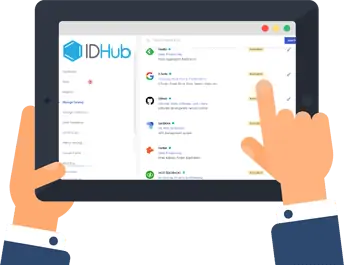
Identity and access management (IAM) is no longer a luxury—it’s a necessity. Cyber threats are increasing, and organizations must ensure only authorized users have access to critical systems and data. IAM goes beyond simple login credentials; it’s a strategic security framework that protects against breaches, reduces compliance risks, and improves operational efficiency.
However, IAM is not a “set it and forget it” solution. It requires continuous monitoring, updates, and enforcement of security policies to keep up with changing business needs. Without a strong IAM system in place, organizations risk unauthorized access, costly data breaches, and compliance failures.
What Is Identity and Access Management (IAM)?
At its core, Identity and Access Management (IAM) is the backbone of cybersecurity, ensuring that the right people, have the right access, at the right time. It manages digital identities and controls user permissions, ensuring only approved users can access specific data, applications, and systems.
IAM consists of several key components:
- User authentication (e.g., multi-factor authentication, single sign-on)
- Access control (e.g., role-based access control (RBAC), least privilege access)
- Access requests and approvals
- Regular access reviews to ensure permissions align with job roles
- Audit and compliance tracking
Without Identity Management, organizations face security blind spots, where employees, vendors, or even former staff may retain access to sensitive systems long after they should. You can learn more about Identity and Access Management (IAM) here.
Why IAM Is Essential for Every Organization
1. Prevent Unauthorized Access
Unauthorized access is one of the leading causes of data breaches and insider threats. Whether it’s employees, contractors, or third-party vendors, IAM ensures only authorized individuals can access critical resources, significantly reducing risks.
Example: Preventing Data Leaks in a Tech Company
A global software firm faced a security incident when a former employee’s credentials remained active after departure. Without IAM, they had unrestricted access to customer databases, leading to a significant data leak. Implementing IAM helped enforce automated de-provisioning, ensuring ex-employees no longer had access upon leaving the company.
2. Enhance Compliance and Reduce Audit Risks
Industries like finance, healthcare, and government face strict compliance regulations (e.g., GDPR, HIPAA, SOX). IAM simplifies access reviews, audit processes, and tracking of user activity, helping organizations avoid fines and legal issues.
Example: A Bank Automates Compliance with IAM
A financial institution was struggling to keep up with regulatory access reviews. Using IAM, they automated role-based access control (RBAC), ensuring users only had access based on their job function. This not only improved security but also significantly reduced audit preparation time from weeks to hours.
3. Improve Efficiency with Role-Based Access Control (RBAC)
Role-based access control (RBAC) assigns permissions based on roles rather than individuals, reducing manual work and ensuring users only have the access they need. This not only enhances security but also boosts productivity by automating access requests and approvals.
Example: RBAC in Healthcare
A hospital implemented IAM with RBAC to control access to patient records. Nurses could view medical histories, while administrative staff had limited access to billing information. By enforcing role-specific access, the hospital improved HIPAA compliance and patient data security.
4. Support Growth Without Sacrificing Security
As companies expand, so does the complexity of managing user access. IAM scales with your business, automating access requests, role changes, and employee onboarding, eliminating security gaps caused by manual processes.
Example: IAM Supporting Remote Work for a Global Enterprise
A multinational company expanded its remote workforce, increasing access points across multiple cloud applications. Implementing IAM helped the IT team manage remote access securely while preventing unauthorized login attempts from compromised credentials.
5. Reduce IT Costs and Security Risks
IAM solutions minimize IT workload by automating password resets, managing user access centrally, and preventing unauthorized system modifications. Fewer security incidents mean lower costs associated with breach remediation and compliance violations.
Example: Reducing IT Help Desk Costs in a Retail Company
A retail company noticed that password reset requests made up 40% of IT support tickets. By implementing self-service IAM tools, they reduced password-related support calls by 75%, freeing up IT teams to focus on more strategic initiatives.
IAM in Action: Real-World Benefits
Scenario 1: A Financial Institution Facing Compliance Challenges
A bank struggling with manual access reviews and audit requirements implemented IAM to streamline its processes. The result?
- Faster audits
- Reduced compliance risks
- Automated role-based access control (RBAC) to meet regulatory demands
Learn more about IAM for Finance here.
Scenario 2: A Healthcare Organization Securing Patient Data
A hospital deployed IAM to enforce least privilege access, ensuring medical staff only accessed relevant patient records. This led to:
- Fewer data breaches
- Stronger HIPAA compliance
- Simplified access requests for new employees
Learn more about Identity and Access Management for Healthcare.
The Future of IAM: AI, Automation, and Beyond
IAM is constantly evolving. Advanced technologies like Artificial Intelligence (AI) and Machine Learning (ML) are being integrated into IAM solutions to detect suspicious activity, automate access reviews, and enhance identity verification.
What’s Next for IAM?
- AI-driven access controls that adjust permissions based on user behavior
- Automated identity governance to reduce human error
- Zero Trust models ensuring no one is automatically trusted without verification
As cyber threats grow more sophisticated, organizations must invest in adaptive IAM solutions that continuously improve security and compliance.
Choosing the Right IAM Solution for Your Business
IAM is not a one-size-fits-all solution. Every company has unique risks, compliance needs, and operational challenges. Partnering with security experts ensures you implement an IAM strategy tailored to your business—enhancing security without disrupting workflows.
Key Questions to Ask When Evaluating IAM Solutions:
- Does it support automated access provisioning and deprovisioning?
- Can it integrate with existing applications and cloud services?
- Does it offer role-based access control (RBAC) and access reviews?
- How does it handle compliance audits and reporting?
Final Thoughts
As your business grows, so do cybersecurity challenges. Implementing identity and access management (IAM) helps you:
- Protect sensitive data
- Streamline compliance
- Reduce IT costs
Whether you’re in finance, healthcare, retail, or technology, IAM is the key to staying secure and compliant. Don’t leave cybersecurity to chance—invest in a robust IAM solution today.
